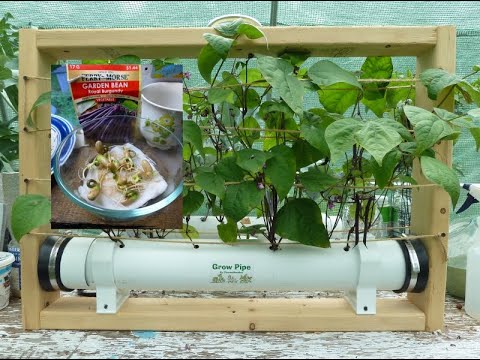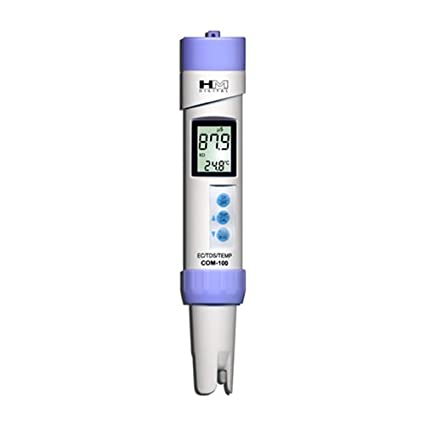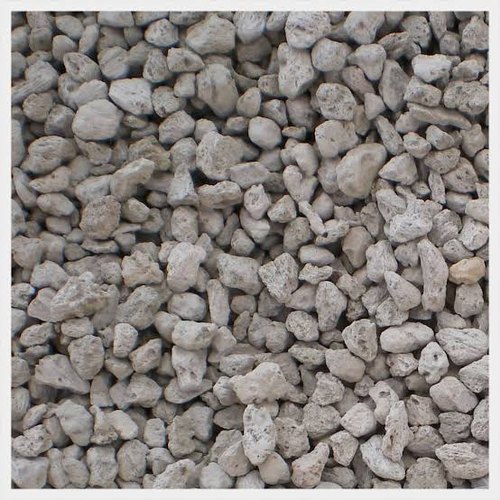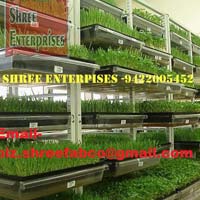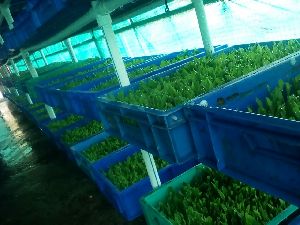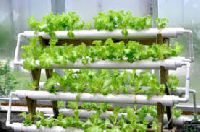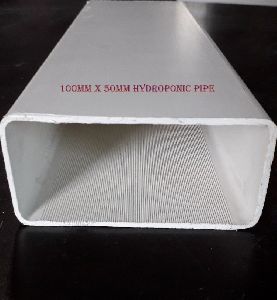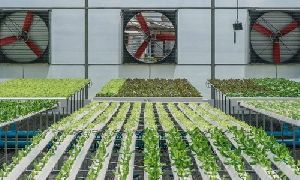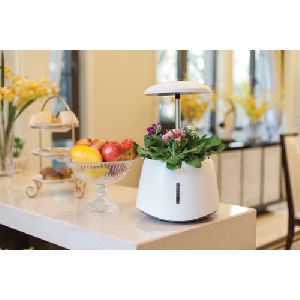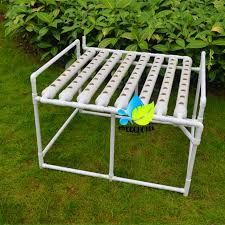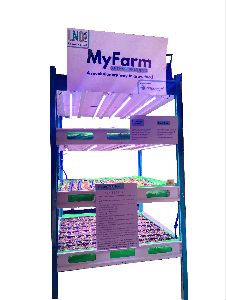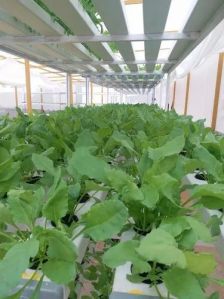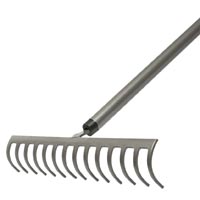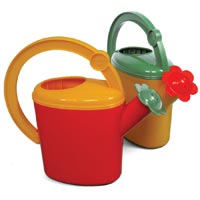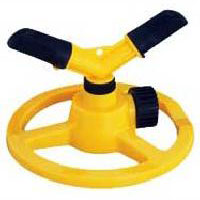Listing ID #5783801
Company Information
Ask for more detail from the seller
Contact SupplierWhat is Hydrophonic?
Hydroponics is a way to skip the soil, sub in a different material to support the roots of the plant, and grow crops directly in nutrient-rich water. There are multiple approaches to designing hydroponic systems, but the core elements are essentially the same. The benefits of hydroponic farming give it an advantage over field farming.
Saves Space
Plants grown in soil need to spread their roots in order to find water and all the nutrients they need to survive. This means they must be planted a certain distance apart from each other. In hydroponic systems, roots don’t need to spread because water and nutrients are delivered right to them. As a result, hydroponic systems can grow more plants in the same amount of space as soil-based systems.
Water Conservation
Did you know field farms account for 80% of the United States’ water use? Field farming uses so much water because so much of it is lost. Water evaporates, rolls away, and puddles, making much of it unusable. That’s a lot of waste! Hydroponic systems use about 10 times less water because it’s delivered in a controlled way. Plus, some systems recirculate water, reducing consumption even more!
Fewer Chemicals
While hydroponic systems don’t eradicate pest issues, it does lower the potential of this happening, resulting in less need for pesticides and herbicides. Hydroponic systems are highly controlled so there’s no risk of weeds taking over your garden. As a result, there’s no need for herbicides. Plus, because hydroponic systems are often indoors, pests can’t infiltrate them as easily, so pesticides aren’t necessary.
Faster Growth
Plants grown in hydroponic systems grow 30% to 50% faster than those grown in soil. Crops grow faster in hydroponic systems because they receive an ideal amount of nutrients and, if grown indoors, have less environmentally induced stress (like weather and pests). Some species are faster than others. For example, leafy greens like lettuce and thirsty fruits like tomatoes tend to grow faster in hydroponic systems.
Nutrient Control
Hydroponic systems feed plants a nutrient solution mixed with water, giving the farmer better control over what nutrients their crops soak up. Cultivar grown in soil may need the help of fertilizers to survive. But in hydroponics, the plants are already receiving all the help they need and the right amount of it. Do your research and make the right measurements, and the crops will have everything they need to survive just from their water.
What we required in hydroponic ?
Fresh water. Were talking primo, filtered stuff with a balanced pH. Most plants like water with a pH level around 6–6.5.
Oxygen. Don’t drown your plants! In traditional farming, roots can get the oxygen needed for respiration from pockets of air in the soil.
Root Support. Even though you don’t need soil, your plant’s roots still need a little something to hold on to. Typical materials include vermiculite, perlite, peat moss, coconut fiber, and rockwool. Stay away from materials that might compact (like sand) or that don’t retain any moisture (like gravel).
Nutrients. Your plant is going to need plenty of magnesium, phosphorus, calcium, and other nutrients to stay healthy and productive –– just like plants growing in the ground need healthy soil and fertilizer. When you’re growing plants without soil, this “plant food” must be included in the water that’s feeding your plants.
Types of Hydrophonic
Wick technology: Wick system hydroponics is the simplest of the six types of hydroponics system designs. The name refers to the fact that these systems take advantage of the action of wicking to feed a water-based nutrient solution to the roots of plants.
Every hydroponic wick system is made up of four basic components:
Wicks
The growing container is positioned a short distance above the reservoir, and wicks are placed so they will draw the nutrient solution up from the reservoir and release it into to the growing medium, which in turn, absorbs it and makes it available to the plant roots.
How it works:
Also known as Flood & Drain. The system floods the nutrient solution onto the grow tray to surround plant roots before draining back. Often automated by a pump connected to a timer. The active and recovery type is less commonly seen, but still quite effective.
How this system works is basically like the way it sounds. Nutrient solutions are flooded onto the plant root system and then drain periodically. And the process goes on.
Plants are grown in a tray/container with a growing medium. A timer is scheduled to turn on the pump, which pushes water with nutrient solutions in a reservoir below to rise through the tube and onto the main part of the system.
After the tray/container is filled (flooded) and soaks the plant roots at set intervals and water level, gravity automatically drains the solution back down into the reservoir.
With this system, a variety of growing medium can be used, e.g., gravel, granular Rockwool, grow rocks, perlite, etc depending on Hydroponic gardeners’ choice.
However, there is a risk of power outages, or pump and timer failure, which causes the root dryness, and water cycles are stopped.
Hydroponic NFT
Nutrient film tecnology, The N.F.T system is at the forefront of people’s minds when hydroponics is mentioned. Nutrient Film Technique uses a constant flow of your Growth Technology nutrient solution (therefore no timer is required). The solution is pumped from a reservoir into the growing tray. The growing tray requires no growing medium. The roots draw up the nutrients from the flowing solution. The downward flow pours back into the reservoir to be recycled again. Pump and electric maintenance is essential to avoid system failures, where roots can dry out rapidly when the flow stops.
Ebb and Flow
Also known as Flood and Drain, is one of the most widely recognized hydroponics systems out there. It is intermediate level in difficulty, relatively low-cost to set up, and extremely versatile. This method allows you to easily alter your garden, adding or removing plants as you wish without affecting any of the surrounding crops. Like other methods, the basic concept is very simple–plants are placed in a tray, which is periodically filled with nutrient-rich water pumped out of a reservoir below. The system uses gravity to return the water to the reservoir to be reused. This system seems complex to beginners because it involves so many different components, but they all come together quite easily and can be assembled in very little time. Once assembled, this system needs little maintenance and produces plants efficiently with very little electricity or water use.
Deep Water Cluture
In a DWC system, a plant’s roots are suspended in a well-oxygenated solution composed of water and nutrients.
There are three critical parts of this solution:
Hydroponic drip systems can easily be designed in several ways, as well as from small to large systems. But they’re particularly useful for larger plants that take a lot of root space. That’s because you don’t require large volumes of water to flood the system, and the drip lines are easy to run over longer spaces. When using a larger amount of growing media for hydroponic plants, more growing media retains more moisture than smaller amounts, and that’s particularly beneficial to large plants because it’s more forgiving to the plants. Forgiving meaning that the plants aren’t as sensitive to watering times, so don’t stress immediately if they don’t get watered on time for one reason or another. Drip system hydroponics is popular in all the hydroponic systems. This type of hydroponics borrows the most water-efficient irrigating method used in traditional cultivation and adapts it to a soilless growing system that’s so simple, efficient, and versatile that it’s being used to make bountiful crops by everyone from city dwellers living in small apartments to some of the biggest commercial hydroponic farms the world over.
Scope of Hydrophonic
Hydroponics scope is very good esp. in India as most of the vegetable supplies available are with residual chemicals and harmful to our health. No matter how rich or poor we are, these vegetable supplies are same for all of us and affect to us and our children. In such times, Hydroponic presents an alternate way of growing very healthy vegetables and making them available for common people at comparable cost and big margins. Considering, that consumption of vegetables are very high in India on account of both high population and high percentage of vegetarians, demand to supply ratio is always going to be high and scope of Hydroponic farming which ensures chemical free vegetables, grown in pure water to be always high.
Typically, 500 sq feet of hydroponic terrace farm can provide daily use fresh vegetables to all family members on daily basis. Small investment to our family’s health will always pay off and hence should be of interest to all of us. These small farms are fairly automated and dont require daily attention. Entrepreneurs with visions could enter into commercial farming and flood hydroponic vegetables to the super market stores on big margin and earn tax free, market slump free regular income.

